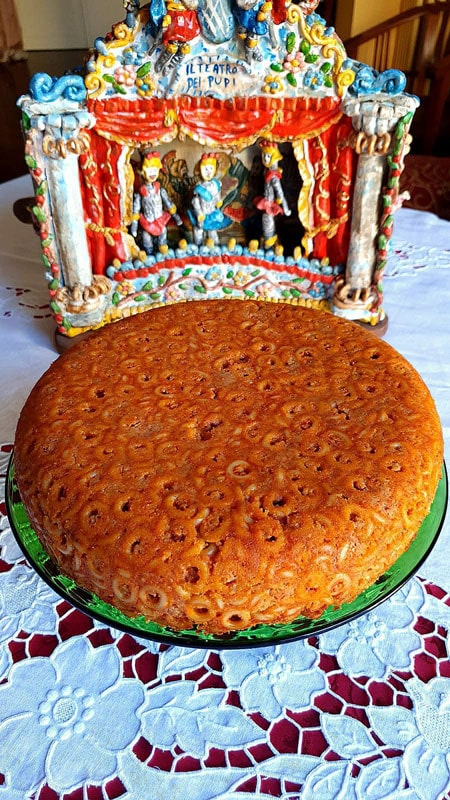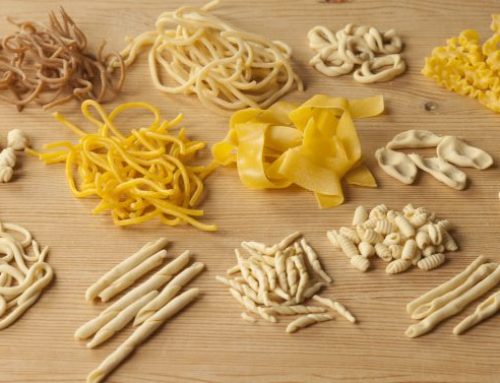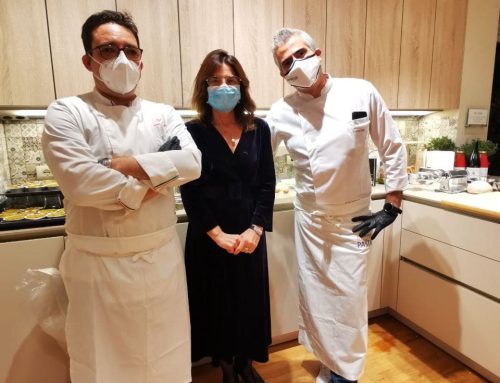If you know a hundred women from Palermo you will have a hundred different recipes for baked anelletti!

In the end, whatever the recipe or method of execution, however, that of the mother or grandmother will always be the best! In any case, everyone will agree on one thing: the cooking of the anelletti must be interrupted in time in order to maintain their consistency and continue cooking in the oven. The anelletti must be of quality because if they broke during cooking, the creation of a first course would fail, which in the intentions of every Palermo cook must be absolutely perfect! The origin of this popular dish actually dates back to the more classic Sicilian aristocratic gastronomic tradition. In fact, today the “timbale of anelletti” (this is the most elegant denomination) is never missing on the tables of holidays or in every self-respecting market and rotisserie but, in a not so distant time, it was a “classic” of wedding banquets.
There are those who attribute the very particular ring-shaped format dating back to the ancient rite of confarreatio, the rite of the Roman wedding during which the future spouses gave their promises a ring-shaped spelled flour bread. The timbale (from the Arabic timmala meaning “drum”) originates from the flan created by the cooks of the emirs at the time of the Arab domination of the 9th century in Sicily. The consecration of baked anelletti as a dish on Sicilian aristocratic tables comes in the nineteenth century when it was proposed by the Monsus who worked for the court and aristocratic families in the great kitchens of the noble palaces. The Monsù (or Monzù, from the French “Monsieur”) were the cooks at the service of the aristocracy in the Kingdom of the Two Sicilies, real chefs who managed every aspect of the palace’s kitchen and who handed down the recipes but only verbally, without leaving nothing in writing, until the disappearance of this kitchen because with the decline of the aristocracy the institution of the family cook became a rarity. Many do not know that a classic recipe of Monsù was precisely that of anelletti in broth which confirms the versatility of the shape of this pasta!
The most prestigious literary testimony of their presence on aristocratic tables is given by Giuseppe Tomasi di Lampedusa who inserts the anelletti among the dishes mentioned in The Leopard (“… and from the kitchen exhaled the centuries-old aroma of the simmering ragù, tomato extract, onions and meat of mutton, for the anelletti of the days reported “) so much so that the flan also took the name of” Timballo del Gattopardo “. It can certainly be said that this wonderful dish that has always met the taste of even the most intransigent adults and the most inappetent children, has literally crossed history, remaining over the centuries one of the undisputed cornerstones of Sicilian cuisine and anelletti, in particular, they are proudly an absolutely original and exclusive feature of this kitchen that will never stop evolving but always respecting tradition.






Leave A Comment